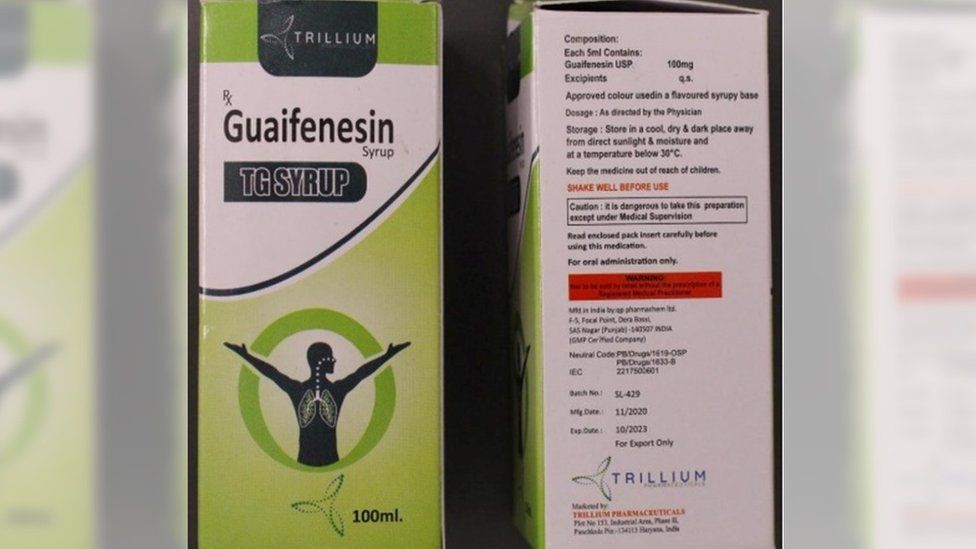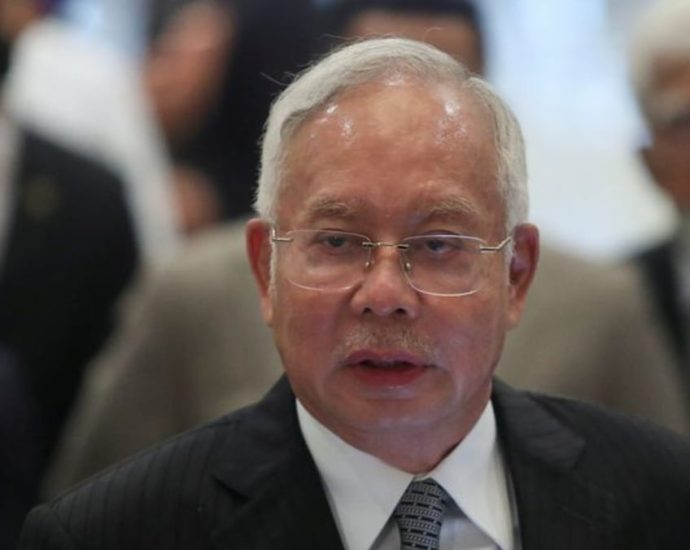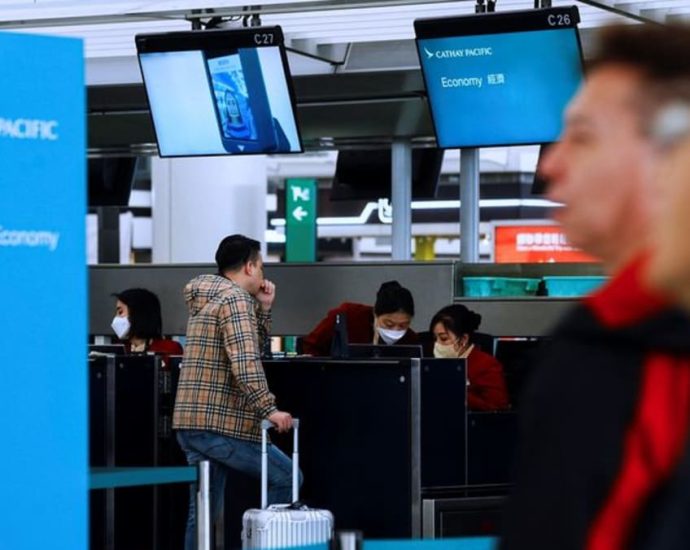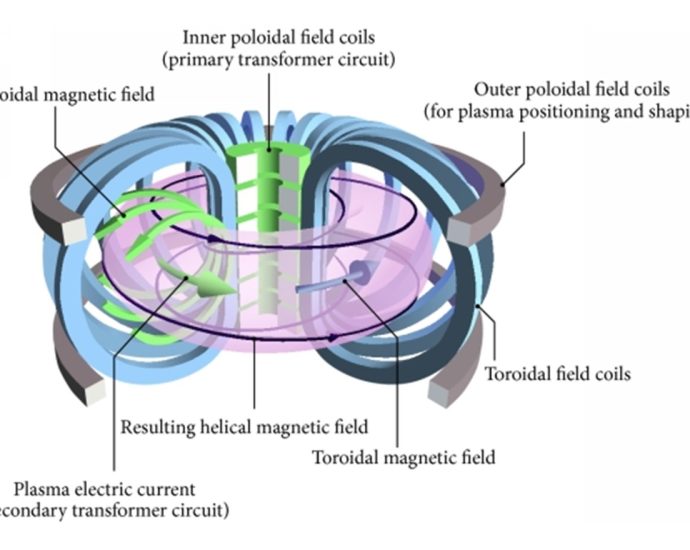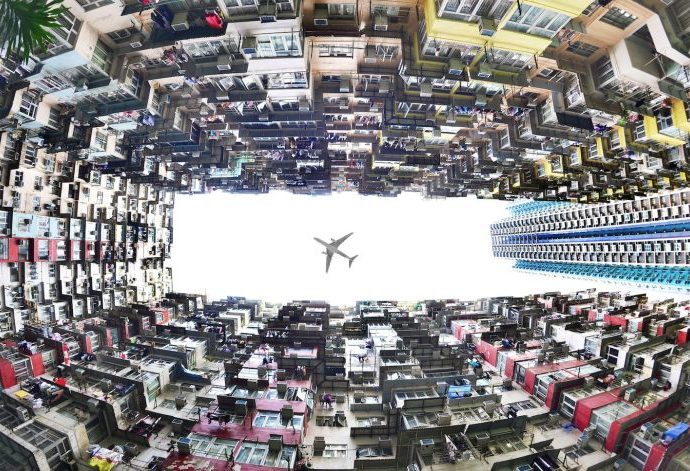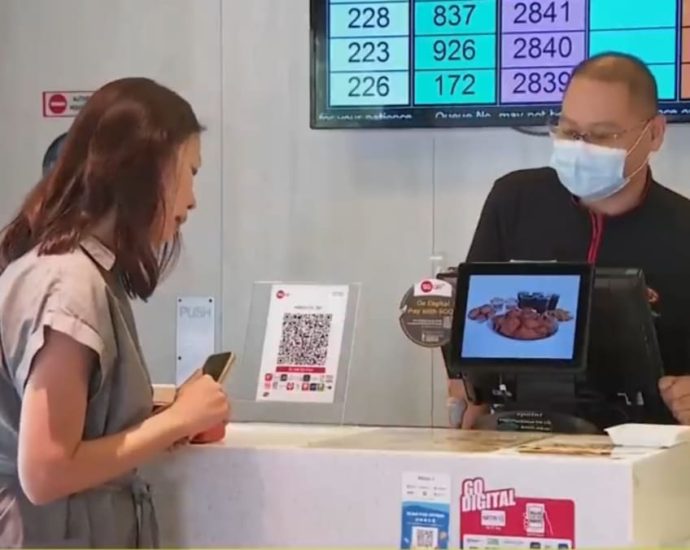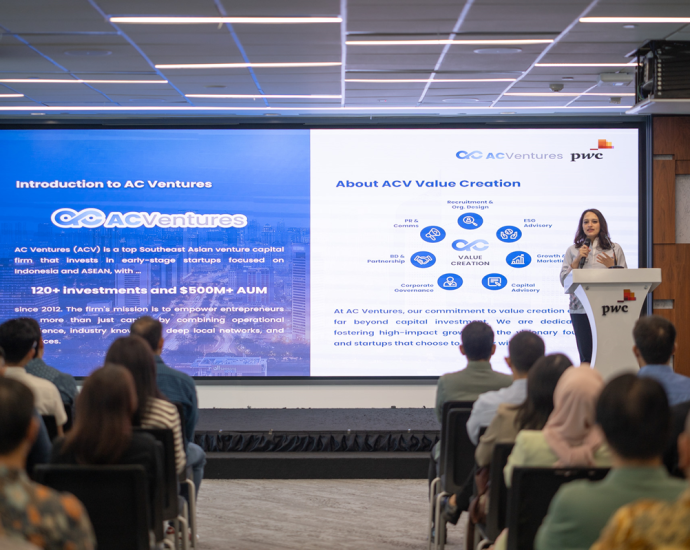Indonesia cough syrup maker boss jailed after child deaths
 Getty Images
Getty ImagesThe boss and three other officials of an Indonesian firm whose cough syrup was linked to the deaths of over 200 children have been sentenced to jail.
They were handed two-year prison sentences and fined 1bn Indonesian rupiah ($63,029; £51,7130).
The firm, Afi Farma, was accused of producing cough syrups containing excess amounts of toxic substances.
The company’s lawyer said they denied negligence and the firm was considering whether to appeal.
Prosecutors had been seeking a prison sentence of seven to nine years for Afi Farma’s chief executive, Prasetya Harahap, and seven years each for the other defendants.
The Public Prosecutor said that between October 2021 and February 2022 the company received two batches of propylene glycol, which is used for making cough syrup.
These batches contained 96% to 99% ethylene glycol, the prosecutor said. Both substances can be used as additives to solvents. While, propylene glycol is non-toxic and widely used in medicines, cosmetics and food, ethylene glycol is toxic and used in paint, pens and brake fluid.
The company did not test the ingredients used in the cough syrup and instead relied on quality and safety certificates from their supplier, prosecutors said.
Afi Farma’s lawyer, Samsul Hidayat, told the BBC that Indonesia’s drug regulator did not require drug makers to carry out rigorous testing of ingredients.
The judge in the Kediri District Court, East Java, found the four defendants guilty of intentionally producing pharmaceutical goods that did not meet safety standards.
The case comes as efforts grow worldwide to tighten the oversight of drug supply chains after the poisonings.
Since 2022, more than 200 Indonesian children, most of whom were under the age of five, have died of acute kidney injury linked to contaminated cough syrup. About 100 deaths have been reported in The Gambia and Uzbekistan.
The World Health Organization (WHO) has issued warnings about six cough syrups made in India and Indonesia.
Related Topics
-
-
30 October 2022

-
-
-
17 October 2022
-
Jailed former Malaysian PM Najib in hospital with COVID-19

KUALA LUMPUR: Malaysia’s jailed former prime minister Najib Razak has been admitted to a hospital after testing positive for COVID-19, his spokesperson said on Thursday (Nov 2).
Najib, 70, is in stable condition and is undergoing quarantine and treatment at the hospital, his aide, Muhamad Mukhlis Maghribi, said.
Najib was taken to hospital on Tuesday from prison after complaining of fever, he said.
The former premier is serving a 12-year jail sentence for corruption linked to state fund 1Malaysia Development Berhad (1MDB).
United States and Malaysian investigators estimate about US$4.5 billion was stolen from 1MDB – co-founded by Najib during his first year as prime minister in 2009 – and that more than US$1 billion went to accounts linked to Najib.
Various recipients of the siphoned 1MDB funds used the money to buy luxury assets and real estate, a Picasso painting, a private jet, a superyacht, hotels, jewellery, and to finance the 2013 Hollywood film The Wolf of Wall Street, investigators have said.
Najib has always maintained his innocence. He was convicted first in 2020 and started his prison term last August when Malaysia’s top court rejected his final appeal, becoming the first premier in the country’s history to be jailed.
Since then, Najib has been in and out of hospital for several issues, including stomach ulcers and high blood pressure.
Najib has applied for a royal pardon, which, if granted, could see him serving a shorter sentence. He also faces other trials on corruption charges.
Hong Kong flag carrier Cathay Pacific banks on premium services in battle back to airline top flight
Singapore Airlines was voted 2023’s best airline in the Skytrax World Airline Awards, known as the aviation Oscars. Cathay ranked number eight. The city’s flag carrier took fourth place in 2019. Lau, 53, said investments in first and business class were especially important, as they were “big revenue drivers” forContinue Reading
Flags at half-mast in Beijing as China mourns late premier Li Keqiang
In central Beijing’s Tiananmen Square, flags were flying at half-mast early Thursday, AFP journalists saw. State news agency Xinhua reported that flags would fly at half-mast at government buildings across mainland China, as well as in the semi-autonomous regions of Hong Kong and Macao. Li will be cremated later inContinue Reading
Visiting the worldâs largest fusion reactor
This is the second installment in Asia Times Science Editor Jonathan Tennenbaum’s series “Fusion Diary.” For an introduction to the series, readers are encouraged to start with “US abandoning its leadership in fusion energy,” by Matthew Moynihan and Alfred B Bortz. Then read part 1 of the series here. – eds
I am standing in the gallery of the control room of the Joint European Torus (JET) – the world’s largest tokamak reactor, situated in the Culham, England. Built as a cooperative project of European nations, JET has been operating for over 40 years, serving as a workhorse for international cooperation in plasma and fusion research.
In December 2021, JET achieved the latest world record for the amount of energy generated by fusion reactions under controlled conditions. During a 5 second pulse, JET produced 59 MJ of thermal energy from fusion of deuterium and tritium. Taking account of the amount of energy absorbed in heating the plasma to its 100 million degree temperature, JET came within a factor of 3 of reaching so-called scientific breakeven.
As I mentioned in the previous article there is now no reasonable doubt concerning the feasibility of generating large net energy outputs by fusion reactors of the tokamak type. A large portion of the credit goes to experiments on JET, which have produced a wealth of knowledge and experience in the course of four decades of operation.
The JET launch countdown
I always wanted to see how a large tokamak fusion reactor is operated. With me on the gallery was JET Senior Exploitation Manager Fernanda Rimini, PhD (physics). She explained what was happening in the control room and kindly responded to my flood of questions.
JET operates in pulses (“shots”) up to about 10 seconds long. Each shot constitutes a separate experiment, and the operators generally change the parameters between shots. Typically one shot is run about every 30-40 minutes, to allow time not only to permit the reactor coils and other systems to cool down but also to analyze the data needed to make decisions about the next experiment. Sometimes the scientists ask for more time for thinking and discussion.
Each shot is preceded by a “countdown,” analogous to launching a rocket. JET is an extremely complex machine, particularly when we take account of the numerous auxiliary systems and diagnostic instruments attached to it. Not surprisingly, JET’s control room somewhat resembles the control center of a space mission.
Rimini pointed to a horseshoe-shaped central table, from which the machine is run by operators including a specialist in charge of the magnetic field coils that confine the plasma, another in charge of the vacuum systems, another in charge of the heating systems and so on. An engineer in charge oversees the whole process.
Around the desk are workstations for staff controlling diagnostic systems and monitoring the data output. Finally, a few scientists evaluate the results and make decisions about the next experiment.

Once a shot has been initiated, events inside the reactor unfold too rapidly for the human operators to intervene. Accordingly, the machine has real-time control systems that are programmed in advance. These systems steer the plasma by adjusting the currents in the magnetic coils, changing the parameters of the external heating systems and injecting tiny amounts of substances into the plasma.
Rimini told me that the countdown to a shot lasts two minutes. First, you start all the subsystems and synchronize them. At the “zero” point of the countdown, the magnetic field coils are activated. It takes about 40 seconds for the coils to reach their full parameters. At that point gas is injected into the toroidal vacuum chamber.
What happens then? The current in the central solenoid is ramped down, and the change in magnetic field strength induces a powerful electric field inside the toroidal chamber, ripping the atoms apart into electrons and nuclei, transforming the gas into a plasma, and inducing an electric current of about 4 million amperes in the plasma. This current heats the plasma to ultra-high temperatures (so-called ohmic heating), while generating a powerful internal magnetic field.
The toroidal coils around the vacuum vessel create an additional magnetic field which, combined with the field generated by the central current, serves to confine the plasma and keep it away from walls of the reactor. The particles circulate in complicated helical trajectories. Poloidal coils, parallel to the torus, help to position the plasma inside the chamber. The auxiliary systems that use particle beams and electromagnetic waves to heat the plasma are turned on.

Controlling this whole process is a remarkable feat. Millions of amperes of current flow through the magnetic coils. During the experiment, the power consumption of the system reaches a peak of 1000 megawatts. Over half of the power comes from onsite generators that convert rotational energy, stored in the motion of two 750-ton flywheels, into a brief pulse of electric power.
Back in the control rooms, screens on the wall show measurements of the main plasma parameters. How dense is the plasma? How hot is the plasma? What is the current in the coils? How much power are we putting in from the heating systems? On the right side of the wall is a screen showing the evolution of the plasma itself, taken by fast video cameras. I was visiting just after a shot was completed and could see view a replay of the shot in slow motion.
Note, that the visible light is only a part of the electromagnetic radiation emitted by the plasma; the core region of the plasma can barely be seen here.

Breakthroughs in computer modeling
I wanted to know how well scientists have learned to control the hot plasma in JET and other tokamak reactors. Plasmas are extraordinarily complex physical systems displaying highly nonlinear behavior and a wide variety of instabilities, which can undermine the functioning of the reactor and even cause serious damage.
In the past, the shortcomings of existing mathematical models and limited computer power made it virtually impossible to simulate and predict the behavior of plasmas in tokamaks and other magnetic confinement fusion devices in a reliable fashion. Tokamak scientists learned, by decades of hard experience, how to avoid certain dangerous areas of instability.
The situation has improved radically. Superfast computers, machine learning and qualitative advances in methods of mathematical modeling of plasma processes now produce a degree of agreement between simulation and experiment that would have been unimaginable in the past.
Not least of all, the new computer codes provide the basis for real-time control of plasmas, steering them away from “bad behavior” and permitting maintenance of a desired steady state.
“There are no huge surprises,” Rimini said. “The models that we have represent the core plasma quite well.” Still, she said, “We need to understand more about what is happening at the edge of the plasma. Not because we don’t really know what happens, but because we are trying to [avoid] large perturbations and have nice little ones instead. And that’s where we are still very much in the research phase.”
The plasma ‘miracle‘
In fact, processes taking place at the “edge” of the plasma have decisive importance for the performance of tokamak reactors. How does it come about that a plasma in JET has an “edge”? One would naturally expect the density of plasma to drop off only gradually as you move out radially from the core region toward the walls of the reactor.
The answer lies in a self-organizing process, in which the plasma creates its own barrier region – the so-called “pedestal” – that prevents particles from diffusing outward, forming a relatively sharp edge layer around the plasma.
This phenomenon was discovered in 1982 by researchers working with the ASDEX experimental tokamak in Germany. It is connected with a specific plasma state (or regime), now called the “H-mode.” (“H” stands for “high confinement.”) Researchers have since learned how to “nudge” the plasma into this H-mode routinely.
In our discussion, Fernanda Rimini called the existence of the H-mode “a kind of miracle.” Operating tokamaks in this mode dramatically increases their ability to confine the plasma. Together with breakthroughs in computer modeling and the advent of high-temperature superconductors, experience with the H-mode is a major source of confidence that tokamak reactors can become economically viable sources of energy in the future.
As is usual in plasma physics, turbulence and instabilities occur – called “edge localized modes (ELMs)” – which can cause plasma to “leak out” into the surroundings. This is a huge topic in fusion today and one of the focal points of work on the JET. JET scientists have developed special diagnostic systems to study the edge and “pedestal” region of the plasma.
Interestingly, the strategy is not to suppress the ELMs completely but, rather, to control them in such a way that a small amount of plasma can move out of the bulk of the plasma into the so-called divertor region, where impurities and helium nuclei (the “ash”) produced by the fusion reactions are removed.
In this way one can keep the core plasma “clean.” Rimini remarked that we don’t want large perturbations, only “nice little ones”.
Yes, fusion does produce some radioactivity
Moving on, I raised the issue of radioactivity in connection with operation of fusion power plants.
The first generation of fusion power plants based on the tokamak design will almost certainly employ a mixture of deuterium (D) and tritium (T) as their fuel. While deuterium is a stable isotope, tritium is radioactive. Additional radioactivity arises through the absorption of neutrons, produced in the D-T reaction, by atoms in the materials in the proximity of the fusion plasma.
Fusion power plants based on D-T fuel will use significant amounts of tritium. The walls of the vacuum chamber, as well as adjacent components and materials, will be subjected for long periods to intensive neutron bombardment. Radioactivity becomes a significant issue – albeit nothing remotely comparable to the hazards posed by the long-lived radioactive isotopes produced in fission reactors.
The first issue concerns safe operation and especially the maintenance of a D-T fusion reactor. In this context, JET is providing useful experience, especially with regard to maintenance operations that have to be carried out the radioactive environment of the reactor.
JET was designed from the very beginning for all maintenance to be done by remote control. Dr. Rimini took me to see a full-scale industrial mockup of the JET reactor vessel, where I could see one of the two 12-meter-long, remotely-operated boom systems, which are introduced through entry ports during shut-down periods. The booms are articulated in such a way that they can reach all locations inside the toroidal vacuum chamber, through snake-like motions.
Readers can see an impressive video here.

I could also view operators training on these systems. Their situation is a far cry from that of traditional mechanical “hot cell” manipulators where the operator stands just outside the cell, separated by a protective window.
In the case of JET (as in future fusion plants) the operators are situated far from the reactor, working with remote robotic arms and closed-circuit video. Most remarkable, this system provides haptic feedback – operators can “feel” objects they are handling. I saw an operator practice picking up a screw and screwing it into a hole.

Near the JET building, UKAEA has a separate facility called RACE (Remote Applications in Challenging Environments) devoted to the further development of robotic systems for various applications, including fully autonomous robots.
Most of the time JET has operated with deuterium alone, producing only a very small number of fusion reactions. But JET has twice operated for extended periods with D-T fuel. A third and final “campaign” of experiments, designated DTE3, is being prepared now. It will run for seven weeks.
Fernanda Rimini told me that the focus of DTE3 is not to go for a new record in fusion reactions, but rather to develop plasma science, materials science, and “neutronics.”
Lessons for the future of fusion power
The latter field, which deals with the effect of neutrons on various materials, has enormous importance for future tokamak power plants. Firstly, exposure to a heavy flux of neutrons degrades materials in the reactor, and frequent replacement can be a major cost factor. A second important issue for future reactors is the effect of neutron bombardment on the performance of the superconducting coils.
A third major issue, as I shall discuss below, is how to deal with the radioactivity produced by the absorption of neutrons by the reactor vessel and surrounding components.
A main aim of the 36 planned DTE3 experiments is to investigate the impact of neutrons on in-vessel materials, electronic components and data acquisition systems. In addition, it is essential to ascertain the amount of radioactive tritium absorbed by the walls of the vacuum vessel, and to develop improved methods for reducing the heat load on reactor components, especially the divertors.
According to the plan, JET will be decommissioned after the completion of DTE3. This process, to be carried out under the auspices of the UKAEA , will provide many valuable lessons and experience for the future large-scale application of fusion energy, as well as data relevant to estimating the complete life-cycle cost of fusion power plants.
The entire JET facility, including the reactor system with all its components and auxiliary facilities, will have to be taken apart or demolished. The resulting material – a significant portion of which will be radioactive – must be safely disposed of and the site cleared.
Unlike nuclear fission, the D-T fusion reaction itself produces no radioactive waste; the reaction products are the stable element helium-4 plus a neutron. Nearly all the neutrons are absorbed into materials and the remaining “free” neutrons decay within a few minutes.
The “radioactive waste” from the fusion reactor consists of reactor materials that have become radioactive as a result of neutron absorption, plus a small amount of radioactive tritium (half-life 12.4 years) which has been absorbed into reactor materials in the course of operation.
Ideally, provided certain chemical elements can be avoided in the composition of the materials from which the reactor is built, future D-T fusion power plants will produce only low-level waste, which does not necessitate permanent underground deposition.
Fortunately, there is significant leeway in the choice of materials in the design of fusion reactors. But it may well prove to be impossible or impractical to avoid at least a small amount of intermediate-level waste, which will require long-term storage. A short overview of these issues by the UK Committee on Radioactive Waste Management can be found here.
As far as low-level fusion waste is concerned, a number of options are being explored including recycling for commercial use in the nuclear industry and other areas.
A big advantage of fusion waste is that it consists of relatively few radioactive elements, whereas fission generates a large number of isotopes scattered across the periodic table. On the other hand, large-scale use of fusion power plants will generate low-level waste in very substantial amounts. The reuse of materials and sites is thus an important consideration.
In the case of JET, which will have operated with D-T fuel only for periods in the range of several weeks, the level of radioactivity will be much smaller than in future power plants. Nevertheless, practically all steps of the on-site decommissioning will have to be carried out by remote control and robotic systems.
That includes dismantling of the reactor and all its auxiliary equipment, processing for removal of absorbed tritium (detritiation), cutting and sorting, waste treatment and transfer of radioactive and non-radioactive materials into containers for storage and transport.
In 2022 the UKAEA launched a new program called the “JET Decommissioning and Repurposing (JDR) program.” JDR is already begun to solicit industrial partners.
I should remind the reader that the spherical tokamak design, which the UK Atomic Energy Authority has cleverly adopted as the mainstay of its magnetic confinement fusion program, differs greatly from JET as well as from the giant ITER reactor under construction. (ITER is in many ways a scale-up of JET.)
Nevertheless, the knowledge, experience and technology generated by the JET project have been an essential input to the UK program. I think it is fair to say that JET has been one of the most successful fusion experiments so far.
NEXT: The spherical tokamak story
Jonathan Tennenbaum, PhD (mathematics), is a former editor of FUSION magazine and has written on a wide variety of topics in science and technology, including several books on nuclear energy.
Arvind Kejriwal: Delhi chief minister to be questioned in corruption case
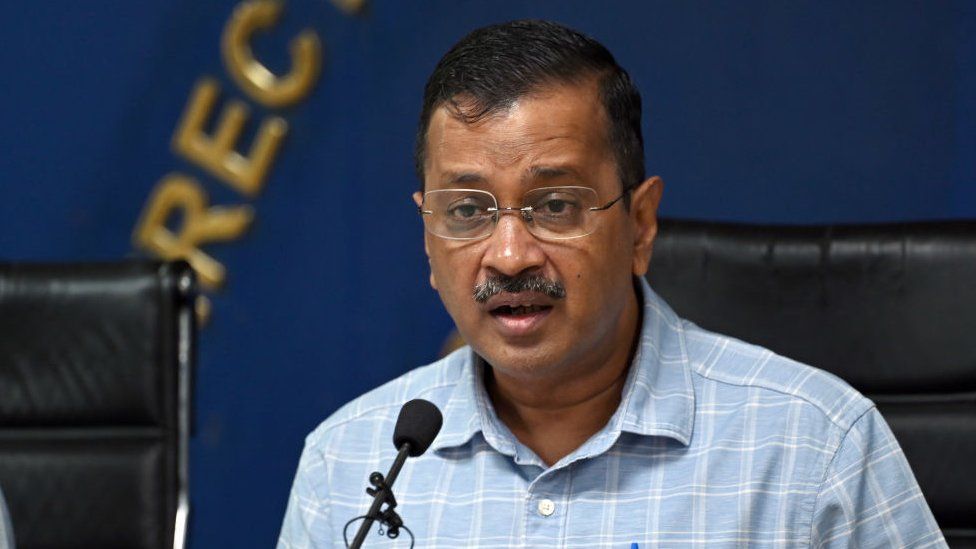 Getty Images
Getty ImagesArvind Kejriwal, Delhi’s chief minister and leader of the governing Aam Aadmi Party (AAP), is set to be questioned by India’s financial crimes agency.
The Enforcement Directorate (ED) is investigating an alleged fraud case related to a now-scrapped liquor sale policy in the state.
AAP leaders Manish Sisodia and Sanjay Singh have been arrested in the case.
AAP has denied the allegations against its leaders and accused the federal government of political vendetta.
But India’s governing Bharatiya Janata Party (BJP) has accused the AAP of indulging in corrupt practices for political gains.
India’s top investigation agency – the Central Bureau of Investigation (CBI) – and the ED allege that there were irregularities in the framing and implementation of the liquor policy.
The policy was implemented by the AAP government in 2021 and was withdrawn less than a year later.
Investigators allege that it favoured certain liquor dealers and that illicit gains were used by the AAP to fund a poll campaign – allegations that the AAP has strongly denied.
In April, Mr Kejriwal was questioned by the CBI for nine hours in connection with the case. At the time, he had said that the entire case was “fabricated” and built to “bring down” his party.
The AAP has been trying to position itself as a key opposition force to the BJP – apart from being in power in Delhi and Punjab, it contested elections in Goa this year and plans to do so in three more states.
The CBI and the ED report to the federal government, headed by Prime Minister Narendra Modi. Many opposition leaders, including Mr Kejriwal, have accused the BJP of using federal agencies to target them in the run up to the general elections in 2024, an allegation the governing party denies.
Reports say AAP has been planning future steps should Mr Kejriwal be arrested. “It would be decided by senior party leaders. But if the whole party is in jail, then the government and the party would run from jail,” AAP leader Saurabh Bharadwaj told the media on Wednesday.
In May, the ED had arrested Delhi’s former health minister Satyendra Jain in a money laundering case. He is out on bail on health grounds.
Mr Sisodia, the state’s former deputy chief minister, was arrested in February in the liquor policy case, while party MP Sanjay Singh was arrested in the same case last month. They remain in jail as their bail pleas have been rejected by courts.
BBC News India is now on YouTube. Click here to subscribe and watch our documentaries, explainers and features.

Read more India stories from the BBC:

US-Gulf reset in a shifting global order
In an era marked by shifting global dynamics, the United States finds itself navigating the choppy waters of China’s ascendance and countering Russia’s invasion of Ukraine. Against this backdrop, leaders in the Persian Gulf region and beyond are forging their own paths, with a pronounced emphasis on economic diplomacy, political de-escalation, and diverse strategic alignments.
The invitation by the BRICS grouping in late August to integrate six new members into the bloc underlines the challenges confronting the US in adapting to these changes, particularly in the Middle East.
Though some countries have yet to respond to the invitation formally, it’s likely that all – the United Arab Emirates, Saudi Arabia, Iran, Egypt, Ethiopia, and Argentina – will join Brazil, Russia, India, China, and South Africa as BRICS members in January.
Most of the realignments in the Middle East and the Gulf are rooted in the region’s quest for foreign-policy diversification. This urge can be traced to the rise of Asian economies two decades ago, and more significantly, to the American “pivot to Asia” during the administration of president Barack Obama.
The growing perception that the US is distancing itself or wavering in its commitment as the region’s primary security anchor has ignited a search for new policy frameworks.
As the Gulf region experiences rapid economic growth, national policies are diverging from American interests, even as both regions maintain carefully measured alignments in security matters.
While the sudden and chaotic withdrawal from Afghanistan in 2020 played a crucial role in pushing Middle Eastern countries to look beyond Washington, at least three other US-led actions have shaped the region’s new outlook.
Diversion from US policy
First, many Gulf and Middle Eastern states were reluctant to support the US-led invasion of Iraq in 2003, concerned that it would fuel Iran’s regional expansion in a post-Saddam Baghdad. True to those fears, the following years of instability allowed the rise of Tehran-supported militias and parties in Iraq that often became hostile to the Arab Gulf states.
Second, while some in the region advised against Washington backing the removal of Hosni Mubarak in Egypt in 2011, their concerns went unheeded. The Middle East has grappled with the ramifications of extreme Islamic politics ever since.
Finally, despite regional opposition to the nuclear deal with Iran, the US signed the Joint Comprehensive Plan of Action in 2015. Its subsequent reversal – and a yet-to-be-completed revision of the reversal – have further muddled perceptions of the United States’ intentions in the region.
These events undermined American credibility. As a result, regional players took matters into their own hands in Yemen, which further strained their relationship with Washington. Most recently, Houthi drone attacks on Saudi Arabia and the UAE between 2019 and 2022 further tested the region’s US partnership.
It is yet to be seen to what extent the fighting between Israel and Hamas will further affect the US position in the Middle East, particularly if there is an escalation drawing in Iran’s other proxy militias in the region.
After spending $8 trillion in the Iraq and Afghanistan wars and the “war on terror,” the US has now spent some $75 billion to help Ukraine counter Russian aggression, with promises of additional support. Much of the Middle East, which has sought to remain neutral on Ukraine, is biding its time and looking to maximize the benefits that a global realignment could have for middle powers.
Trade diversification
China, meanwhile, has been quietly capitalizing on economic opportunities in the Middle East.
Supported by partnerships in energy, trade, technology, and investment, China’s dealings with the six Gulf Cooperation Council (GCC) countries reached US$233 billion in 2021, a significant increase from $134 billion a decade earlier. In comparison, US trade with the GCC was estimated at about $60 billion in 2019, down from about $100 billion in 2011.
The energy and trade volume between GCC states and their Asian counterparts – including India, South Korea, Japan, and the Southeast Asian group – significantly outweigh their dealings with the US. This relationship between leading oil producers and consumers in Asia has influenced the GCC’s foreign policy and security strategies.
Trade isn’t the only indicator alliances are shifting. The region’s strategic perspective also diverges from that of Washington. While defense and security ties with the West remain crucial, endeavors this year to mend relations with regional adversaries, such as Iran, signal a shift in focus toward prioritizing economic diplomacy. This evolved approach speaks to the region’s enhanced strategic autonomy.
Many countries in the Middle East now boast stronger economies and more robust military capabilities than in the past. While the region is far from being fully self-sufficient, it’s gradually diversifying its partnerships – and doing so on its own terms. The more Washington acknowledges this move toward strategic self-determination, the better it will align with the region’s aspirations and priorities.
At its core, the Arab Gulf region endeavors to be a realm where cooperation trumps confrontation. This spirit resonates in leaders’ preference for dialogue, diplomacy, and diversified alignments over militaristic interventions and proxy politics.
The heterogeneity of strategies within the GCC underscores the necessity for the US to recalibrate its approach. The road to rejuvenating the US-Gulf-Middle East partnership demands a nuanced understanding of the region’s worldview.
The Middle East, and particularly the GCC bloc, is not monolithic. Individual countries adopt varied strategies anchored in their unique interpretation of strategic independence.
Grasping the Middle East’s perception of global affairs, expanding initiatives like the Abraham Accords, endorsing niche collaboration frameworks such as the I2U2 (India, Israel, the UAE and the US), and broadening alliances by incorporating such as South Korea, Singapore and Japan could be initial steps in rejuvenating the region’s ties with Washington.
As the Gulf nations chart new courses in a shifting geopolitical landscape, it’s imperative for US policymakers to recalibrate their strategies in kind.
This article was provided by Syndication Bureau, which holds copyright.
Major powers wary of being drawn into confrontation

Quantitative and qualitative polarization trends David Woo and David Goldman take stock of polarization trends across economic, market, and political arenas, including Israel’s military campaign in Gaza, signs of de-escalating tensions between the United States and China, and the Ukrainian military’s manpower challenges. Military conflict risks: Regional war risk recedes David Woo analyses the results of the RIWI-Unbound Military […]
Enhanced QR payment scheme on trial with more scan-and-pay options for merchants and consumers

The trial will involve 23 payment schemes, including local issuers Changi Pay, EZ-Link, GrabPay and NETS, as well as overseas issuers Google Pay and Visa. Alipay and WeChat from China, DuitNow from Malaysia and PromptPay from Thailand are also part of the test.
MAS said the availability of international payment options will allow tourists to transact conveniently using their native payment applications.
TWO PAYMENT PROVIDERS
Merchants participating in the trial can choose from two payment providers – Liquid Group and NETS.
The track led by Liquid Group, a local digital payment provider, operates a switch that processes payments between the financial institutions serving the merchants and those serving the consumers.
It will also allow consumers to scan and pay at participating merchants using their mobile applications that are linked to credit cards.
“It’s a many-to-many framework, meaning connecting many users to many app merchants … the whole thing will be able to eventually create a more inclusive and scalable system in Singapore,” said Mr Jeremy Tan, CEO of Liquid Group.
AC Ventures and PwC unveil corporate governance playbook for tech startups
79% of investors view ESG as central to their investment calculus
Playbook offers practical advice on foundational governance principles
AC Ventures, in collaboration with PricewaterhouseCoopers (PwC) Indonesia, has released a playbook on corporate governance tailored for tech startups. Anchored in the Indonesian General Guidelines for Corporate Governance, the playbook offers actional advice on…Continue Reading




